The Catalyst Killing - [14]
I noticed that there were no photographs from the time before Falko, and asked when they had met. This time, it was he who answered.
‘Rather typically, it was in the trenches, in the fight against fascism. In Madrid on a spring day in 1937. I had travelled from Amsterdam to volunteer as a soldier, and Astrid had come from Oslo to volunteer as a nurse. We met in a trench and stayed together. Then in spring 1938, we and many other volunteers had to leave Spain in order to save our lives. I anticipated that the Netherlands would be occupied by the Nazis within a few years. So I followed my Astrid to Norway. We never for a moment dreamed that Nazism would follow us here.’
The Reinhardts were remarkably well synchronized. His wife nodded as he spoke, and then continued the story.
‘But then one day the war came to Norway. Before the war, we had been active in the Norwegian Communist Party and had met Peder Furubotn. So it was perfectly natural for us to support the communists in the resistance movement. We were active even before the Germans attacked the Soviet Union, in case you were wondering. Then everything exploded and we had to escape in all haste. We were with Furubotn when the Germans attacked his camp in Valdres in the autumn of 1942 and miraculously managed to get away and across the border into Sweden. But the authorities there persecuted us for our political beliefs too. So then we went to Great Britain, where we worked in the lower echelons of the government administration for the last two years of the war. And it was there, in autumn 1944, in the midst of all the horrors of war, that we experienced a miracle that we had not dared to hope for.’
I looked over at her husband, who continued: ‘We had tried for seven years, and in three countries, to have a baby. In spring 1944, with only a few days between us, we both turned forty. We had definitely given up all hope of there ever being more than two of us in the family. I had lost one of my best friends in an air raid the night before. But I still cried with joy for the first time in my adult life when Astrid came running into my office to tell me. And I cried for the second time in my adult life on 12 November 1944, when I saw my son for the first time. In the midst of all the wounded and dying people, a small miracle was born to us in a half-bombed hospital in London. We feared for his life every day in London. And when the war was over, we took it in turns to watch over him on the journey home, in case the ship should sink. We were both awake for those last twenty-four hours. It was an enormous relief when we could finally go ashore in Oslo, with our little Falko intact.’
The Reinhardts seemed to be so in tune and shared their story equally. Mrs Reinhardt nodded as her husband told his part, then took over when he stopped.
‘We wanted so desperately to have a child that we would have gladly welcomed any child. A handicapped child, a blind child – we would still have carried it to the end of the world with us and protected it for the rest of our lives. But it was soon clear that not only had we got a healthy child, but also an unusually intelligent child. Our Falko read out loud for us for the first time when he was three, and could already speak and write Norwegian, Dutch and English before he started school. He got top marks in every subject and was of course the heart and soul of his group of friends. Throughout his childhood he was the sun that lit up our lives. We hope you can understand that, even though you may not understand our politics.’
I looked around the walls, and nodded to show my understanding. Even if one was to take the parental crowing with a pinch of salt, it was impossible not to be fascinated by the collection of photographs that covered three of the living-room walls. There was the three-year-old Falko reading a book, eight-year-old Falko scoring a goal, twelve-year-old Falko speaking from a lectern. Even at that age he stood out from his peers, thanks to his height, his strong face and dark mop of curly hair.
The second-last picture of him was dated 1 May 1968 and showed Falko, again at a lectern, in front of a large gathering of young people.
The last one was dated 29 July 1968, and had been taken here in the living room by the table. The picture showed Falko Reinhardt, Marie Morgenstierne and his parents. They looked at least five years younger in the photograph and were smiling widely.
And there the collection ended abruptly. The fourth wall of the living room, where they had obviously hoped to hang pictures from Falko Reinhardt’s adult life, was an empty white wall. I stood between his parents, silent and lost in thought, as I looked at it. I felt their longing for their lost son, and it seemed that they understood that I understood. The atmosphere when we then sat down at the table was moving, despite the deep gravity of the situation.
I expressed my sympathy for their troubles and my hope that he might still come back alive. Mr Reinhardt thanked me and said that they had for a long time hoped and believed that he was still alive. Their son had been so young, so vital and alive, when he disappeared, that it was hard to imagine he was dead. But as days became weeks, months and years, the doubt grew stronger. It seemed incomprehensible that their son would not let them know if he was alive out there, somewhere. They had had many wild ideas as to what might have happened, without ever really finding an explanation they could believe. It now seemed most likely that he had been kidnapped or killed by some powerful enemy, but they couldn’t understand how it had happened. His wife nodded in agreement.
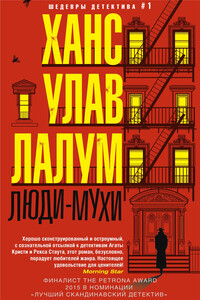
Убит бывший лидер норвежского Сопротивления и бывший член кабинета министров Харальд Олесен. Его тело обнаружено в запертой квартире, следов взлома нет, орудие убийства отсутствует. На звук выстрела к двери Олесена сбежались все соседи, но никого не увидели. Инспектор уголовного розыска Колбьёрн Кристиансен считает, что убийство, скорее всего, совершил кто-то из них. Более того, он полагает, что их показания лживы.
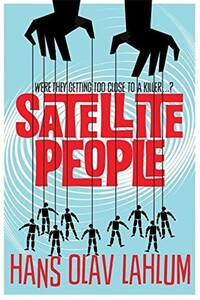
A gripping, evocative, and ingenious mystery which pays homage to Agatha Christie, Satellite People is the second Norwegian mystery in Hans Olav Lahlum's series. Oslo, 1969: When a wealthy man collapses and dies during a dinner party, Norwegian Police Inspector Kolbjorn Kristiansen, known as K2, is left shaken. For the victim, Magdalon Schelderup, a multimillionaire businessman and former resistance fighter, had contacted him only the day before, fearing for his life. It soon becomes clear that every one of Schelderup's 10 dinner guests is a suspect in the case.
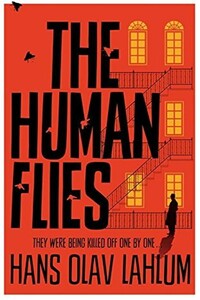
Oslo, 1968: ambitious young detective Inspector Kolbjorn Kristiansen is called to an apartment block, where a man has been found murdered. The victim, Harald Olesen, was a legendary hero of the Resistance during the Nazi occupation, and at first it is difficult to imagine who could have wanted him dead. But as Detective Inspector Kolbjorn Kristiansen (known as K2) begins to investigate, it seems clear that the murderer could only be one of Olesen's fellow tenants in the building. Soon, with the help of Patricia – a brilliant young woman confined to a wheelchair following a terrible accident – K2 will begin to untangle the web of lies surrounding Olesen's neighbors; each of whom, it seems, had their own reasons for wanting Olesen dead.
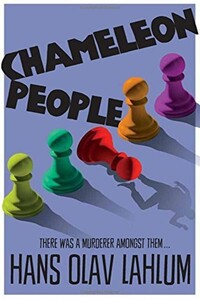
From the international bestselling author, Hans Olav Lahlum, comes Chameleon People, the fourth murder mystery in the K2 and Patricia series.1972. On a cold March morning the weekend peace is broken when a frantic young cyclist rings on Inspector Kolbjorn 'K2' Kristiansen's doorbell, desperate to speak to the detective.Compelled to help, K2 lets the boy inside, only to discover that he is being pursued by K2's colleagues in the Oslo police. A bloody knife is quickly found in the young man's pocket: a knife that matches the stab wounds of a politician murdered just a few streets away.The evidence seems clear-cut, and the arrest couldn't be easier.
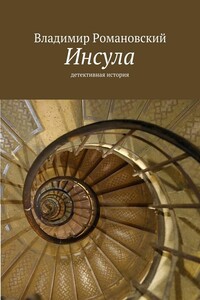
Детективная история, произошедшая в Санкт-Петербурге. Обычные люди в необычных обстоятельствах. Любовь, ненависть, жадность, драки и власть.
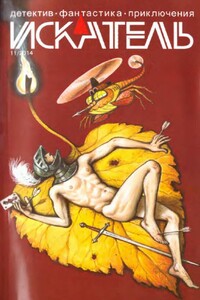
«ИСКАТЕЛЬ» — советский и российский литературный альманах. Издаётся с 1961 года. Публикует фантастические, приключенческие, детективные, военно-патриотические произведения, научно-популярные очерки и статьи. В 1961–1996 годах — литературное приложение к журналу «Вокруг света», с 1996 года — независимое издание.В 1961–1996 годах выходил шесть раз в год, в 1997–2002 годах — ежемесячно; с 2003 года выходит непериодически.Содержание:Анатолий Королев ПОЛИЦЕЙСКИЙ (повесть)Олег Быстров УКРАДИ МОЮ ЖИЗНЬ (окончание) (повесть)Владимир Лебедев ГОСТИ ИЗ НИОТКУДА.
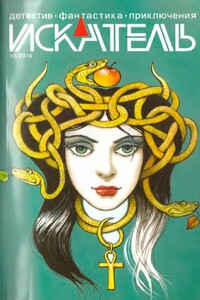
«ИСКАТЕЛЬ» — советский и российский литературный альманах. Издается с 1961 года. Публикует фантастические, приключенческие, детективные, военно-патриотические произведения, научно-популярные очерки и статьи. В 1961–1996 годах — литературное приложение к журналу «Вокруг света», с 1996 года — независимое издание.В 1961–1996 годах выходил шесть раз в год, в 1997–2002 годах — ежемесячно; с 2003 года выходит непериодически.Содержание:Олег Быстров УКРАДИ МОЮ ЖИЗНЬ (повесть);Петр Любестовский КЛЕТКА ДЛЯ НУТРИИ (повесть)
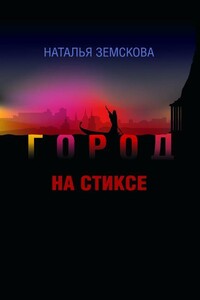
Наталья Земскова — журналист, театральный критик. В 2010 г. в издательстве «Астрель» (Санкт-Петербург) вышел её роман «Детородный возраст», который выдержал несколько переизданий. Остросюжетный роман «Город на Стиксе» — вторая книга писательницы. Молодая героиня, мечтает выйти замуж и уехать из забитого новостройками областного центра. Но вот у неё на глазах оживают тайны и легенды большого губернского города в центре России, судьбы талантливых людей, живущих рядом с нею. Роман «Город на Стиксе» — о выборе художника — провинция или столица? О том, чем рано или поздно приходится расплачиваться современному человеку, не верящему ни в Бога, ни в черта, а только в свой дар — за каждый неверный шаг.
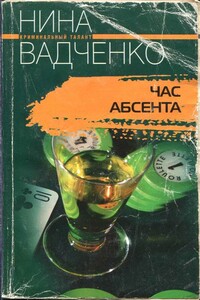
А ведь все так невинно начиналось! Четыре подружки коротали вечерок с бутылочкой «зеленого дьявола» и вели милую дамскую беседу о том… как бы им «грамотно» отправить на тот свет ненавистного шефа. Почему бы не помечтать о приятном в теплой дружеской компании? Все бы ничего, да только шефа вскоре действительно нашли мертвым, к тому же кто-то снял на видео посиделки четырех любительниц абсента. Впрочем, они и сами друг друга теперь подозревают. И распутать этот клубок противоречий по силам только их старой знакомой, неугомонной журналистке Инне Пономаренко…
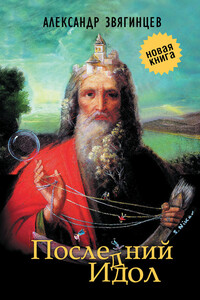
В сборник «Последний идол» вошли произведения Александра Звягинцева разных лет и разных жанров. Они объединены общей темой исторической памяти и личной ответственности человека в схватке со злом, которое порой предстает в самых неожиданных обличиях. Публикуются рассказы из циклов о делах следователей Багринцева и Северина, прокуроров Ольгина и Шип — уже известных читателям по сборнику Звягинцева «Кто-то из вас должен умереть!» (2012). Впервые увидит свет пьеса «Последний идол», а также цикл очерков писателя о событиях вокруг значительных фигур общественной и политической жизни России XIX–XX веков — от Петра Столыпина до Солженицына, от Александра Керенского до Льва Шейнина.